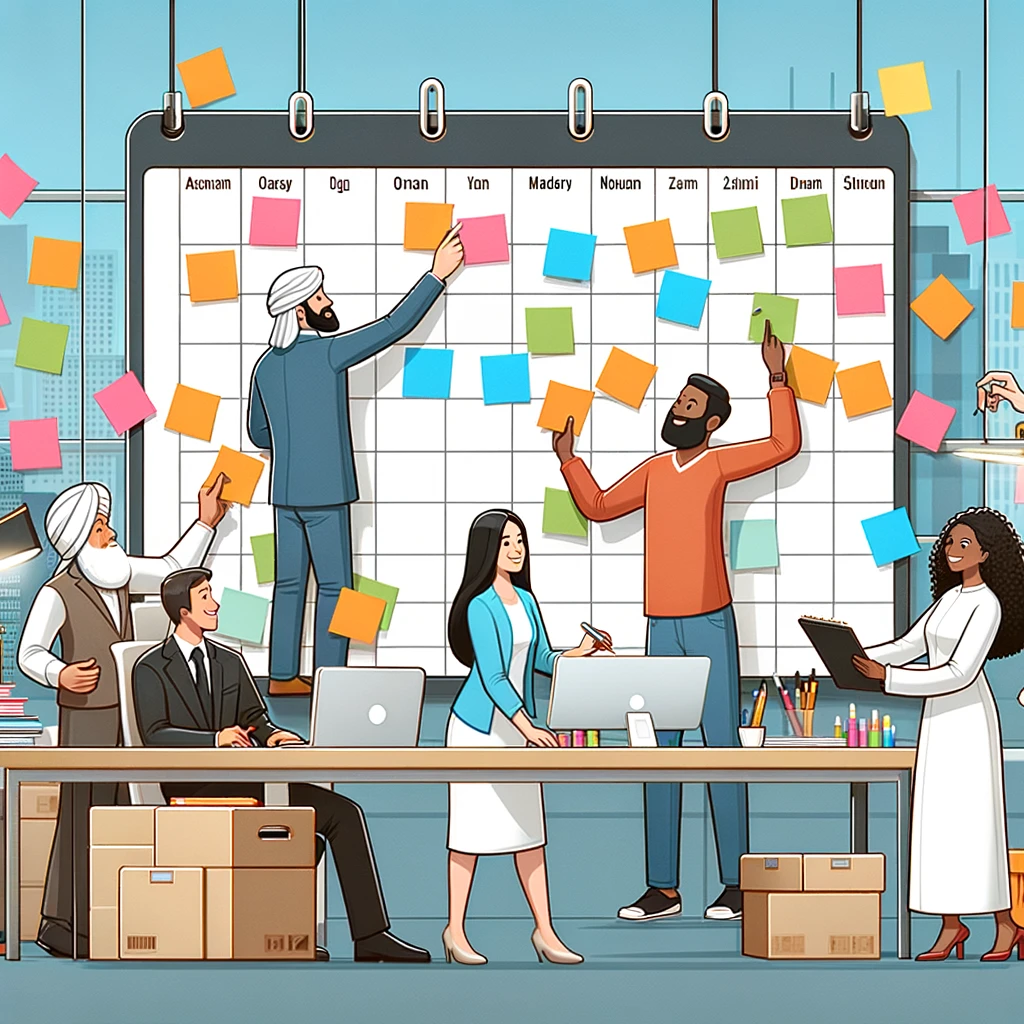Estimated reading time: 6 mins
A Guide on how do you Prioritize Your Work Effectively
In the fast-paced world we live in, effective prioritization is not just a skill but a necessity. Whether you’re a CEO, a student, or a stay-at-home parent, the ability to prioritize effectively can be the difference between feeling overwhelmed and achieving a productive equilibrium. This comprehensive guide will explore various strategies and tools to help you answer how do you prioritize your work?

Understanding the Essence of Prioritization
At its core, prioritization is about more than just managing a to-do list; it’s about making strategic decisions that align with your values, goals, and the limited resource of time. It involves recognizing that while we may want to accomplish everything, our resources – time, energy, and attention – are finite. This reality forces us to make choices that reflect what’s truly important at any given moment.
Effective prioritization begins with discerning the significant from the trivial. It’s about understanding that not all tasks are of equal value and that focusing on less impactful tasks can divert energy from those that are crucial for achieving our objectives. This discernment is not always straightforward, as it requires us to balance short-term urgencies with long-term goals. It often involves tough decisions, like choosing to delay gratifying but less important activities in favor of those that serve our broader aspirations.
Moreover, prioritization is dynamic and contextual. What is a priority today might not be tomorrow. This fluidity demands agility and a willingness to reassess and adjust our focus as circumstances evolve. The essence of prioritization lies in this ongoing process of evaluation, decision-making, and adaptation, ensuring that our actions consistently align with our evolving objectives and constraints.
Step 1: How Do You Prioritize Your Work? Identify Your Goals and Objectives
Before you can prioritize effectively, you need to have a clear understanding of your goals and objectives. What are you trying to achieve in the long run? Set SMART goals – Specific, Measurable, Achievable, Relevant, and Time-bound. Once you have a clear set of goals, it becomes easier to align your daily tasks with these objectives.


Step 2: List Your Tasks
Start by listing all the tasks you need to do. This can include everything from professional responsibilities to personal errands. The act of writing down your tasks helps in organizing your thoughts and makes your workload seem more manageable.
Step 3: Differentiate Between Urgent and Important Tasks
Eisenhower’s Urgent/Important Principle is a powerful tool in prioritizing. Urgent tasks require immediate attention, while important tasks are those that contribute to your long-term mission and goals. Unfortunately, urgent tasks often overshadow the important ones. Learn to differentiate between the two and allocate your time accordingly.
Step 4: Use the ABCDE Method
When you’re asked ‘How Do You Prioritize Your Work?’ another, easy-to-rememberr method you can use is the ABCDE method. Here, you categorize tasks into five categories:
- A: Tasks that are very important and need to be done today.
- B: Important tasks but not as urgent as ‘A’ tasks.
- C: Tasks that are nice to do but not as important as ‘A’ or ‘B’ tasks.
- D: Tasks that can be delegated to someone else.
- E: Tasks that can be eliminated.
Step 5: Consider Effort and Impact when Prioritising Your Work
For each task, consider the effort required and the potential impact. A task that requires minimal effort but has a high impact should be prioritized over a task that requires great effort but has a low impact.
Step 6: Prioritize, but Be Flexible and Adapt
Priorities can change, sometimes unpredictably. It’s important to stay flexible and be willing to adapt your priorities as situations change. Regularly review and adjust your priorities to ensure they align with your current goals and circumstances.
Step 7: Use Tools and Techniques


There are numerous tools and techniques to help with prioritization. For instance, Kanban boards, to-do list apps, and time management apps like Trello, Asana, or Todoist can help you organize and prioritize your tasks effectively.
Step 8: Avoid Procrastination and Perfectionism
Procrastination and the pursuit of perfection can hinder effective prioritization. Not every task needs to be done perfectly; sometimes, ‘good enough’ is sufficient. Learn to identify when perfectionism is holding you back and focus on progress rather than perfection.
Step 9: Defend Your Priorities by Setting Boundaries and Learning to Say No
Effective prioritization isn’t just about choosing what to do; it’s equally about deciding what not to engage in. Setting clear boundaries is crucial for this. Understand your limits and be honest about your capacity. This often involves the challenging but essential skill of saying no. Refusing additional tasks or commitments that don’t align with your key priorities protects your time and energy for what truly matters. Learning to tactfully and assertively say no is a vital component of effective prioritization.
Step 10: Regularly Review Your Priorities
Finally, regularly review your priorities. Your goals and circumstances can evolve, and your priorities should reflect these changes. A monthly or quarterly review of your goals and tasks can be incredibly beneficial. It’s as simple as asking each other ‘How do you prioritize your work?’ and ‘Have your priorities changed over the last period, and why?’
The Psychology Behind Effective Prioritization
Effective prioritization is deeply intertwined with human psychology. Our decision-making processes are often influenced by cognitive biases and emotional responses, which can either aid or hinder our ability to prioritize effectively. For instance, the urgency bias leads us to focus on time-sensitive tasks, sometimes at the expense of more impactful, long-term goals. This bias can create a cycle of constant reactivity to immediate demands rather than proactive focus on strategic objectives.


Another psychological aspect is the phenomenon of decision fatigue. Each decision we make depletes a bit of our mental energy. As the day progresses, our ability to make well-considered choices diminishes, often leading to poor prioritization decisions. This is why it’s crucial to tackle high-priority tasks when our cognitive resources are at their peak, typically earlier in the day.
Emotional factors also play a significant role. Tasks that we find enjoyable or rewarding are often prioritized over those that are necessary but less appealing. This can lead to procrastination on important tasks that don’t provide immediate gratification.
Understanding these psychological underpinnings can empower us to develop strategies that counteract unhelpful biases and emotional inclinations. By being aware of these mental patterns, we can cultivate a more rational and effective approach to prioritizing our tasks, ensuring that our actions align with our long-term goals and values.
How Do You Prioritize Your Work in Different Roles and Industries
Effective prioritization can look different depending on your role and industry. For example, a software developer might prioritize based on product release cycles, while a teacher might prioritize based on the academic calendar. Understand the unique factors in your field that might affect how you prioritize your work.
Conclusion
Prioritization is not just about managing tasks; it’s about managing your time, your goals, and ultimately, your life. By effectively prioritizing your work, you can reduce stress, increase productivity, and achieve a greater sense of balance and accomplishment. Remember, prioritization is a skill that takes practice. Be patient with yourself and continually refine your approach as you learn what works best for you.
As you implement these strategies, you’ll find that you’re not just getting more work done, but you’re also getting the right work done. And in the end, that’s what effective prioritization is all about.
How Do You Prioritize Your Work?
Do you have different strategies for prioritizing work? If so, please share it by leaving a comment below.
